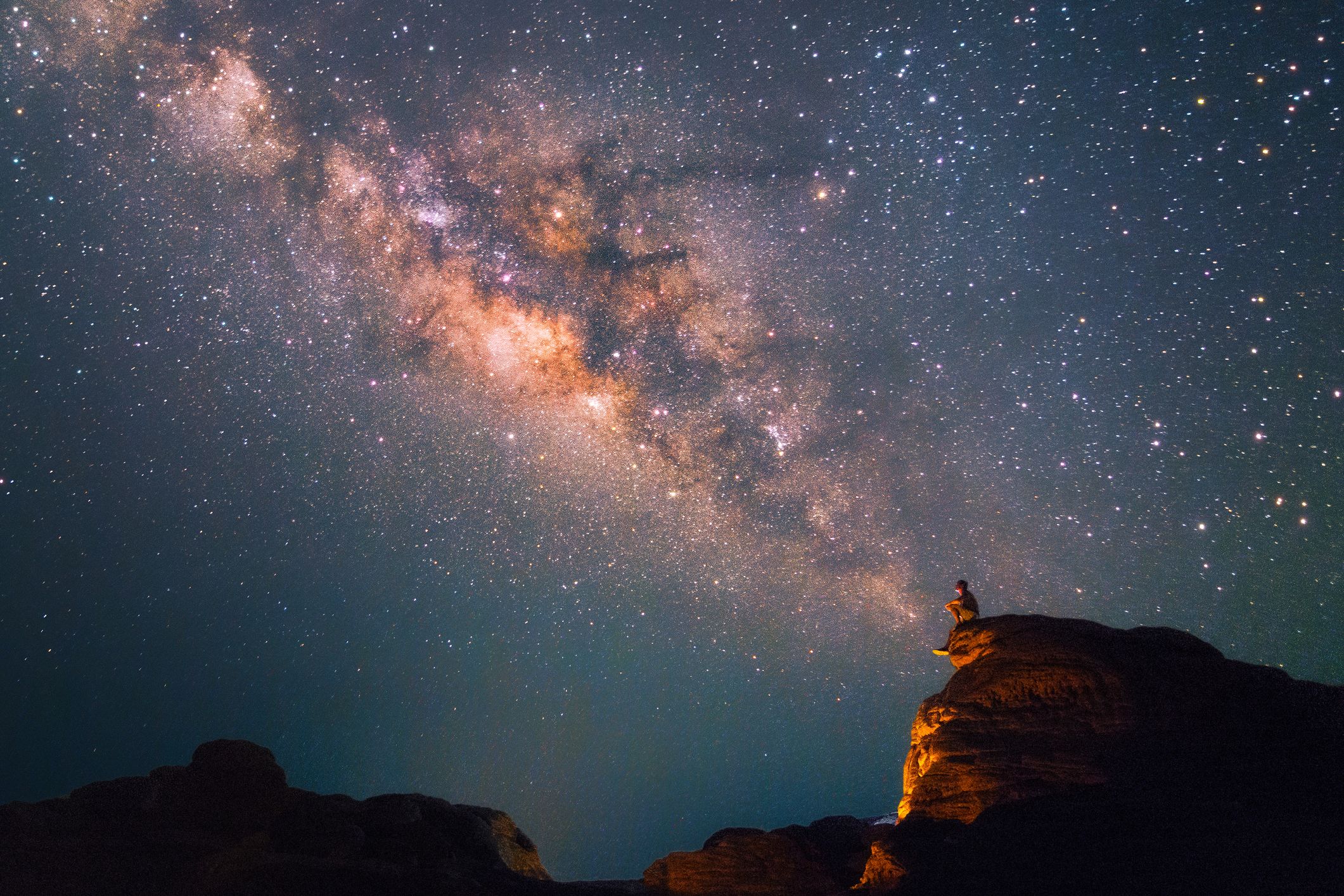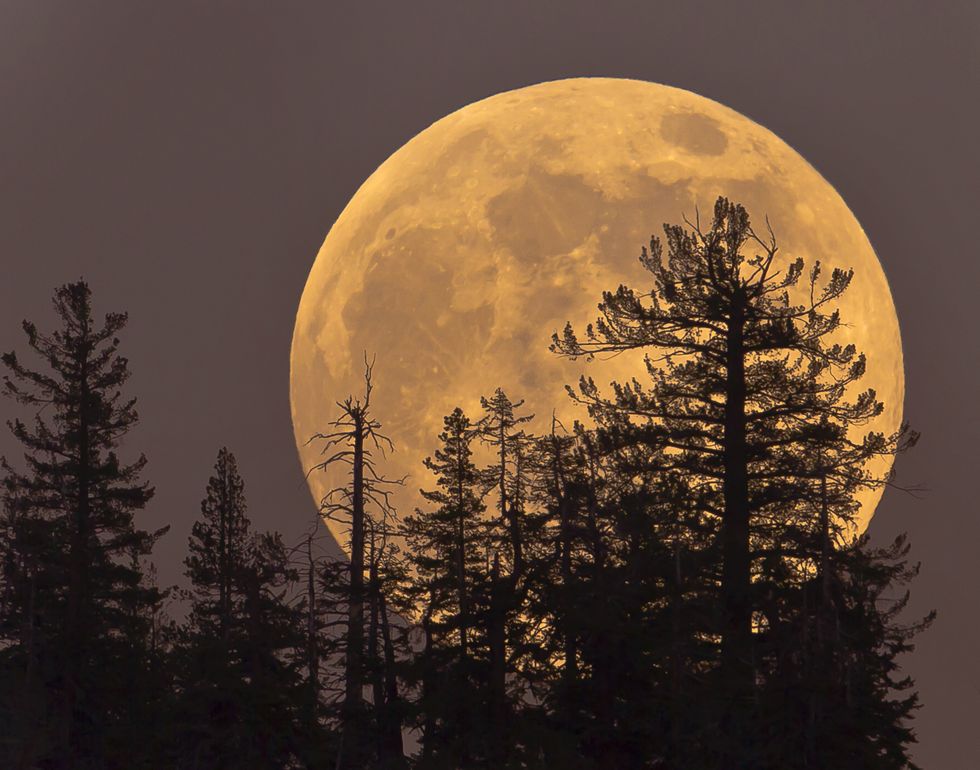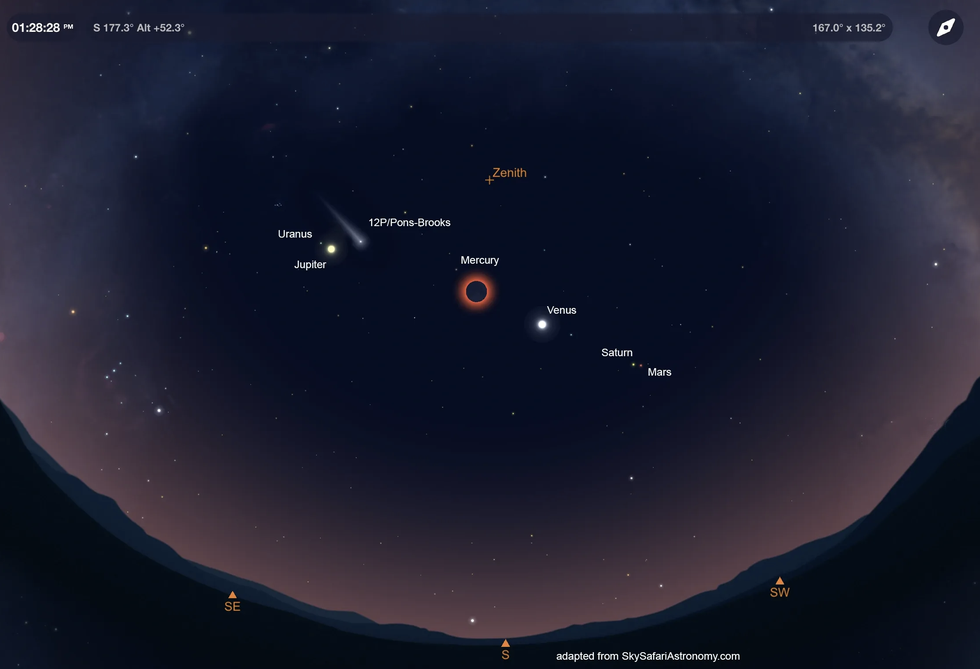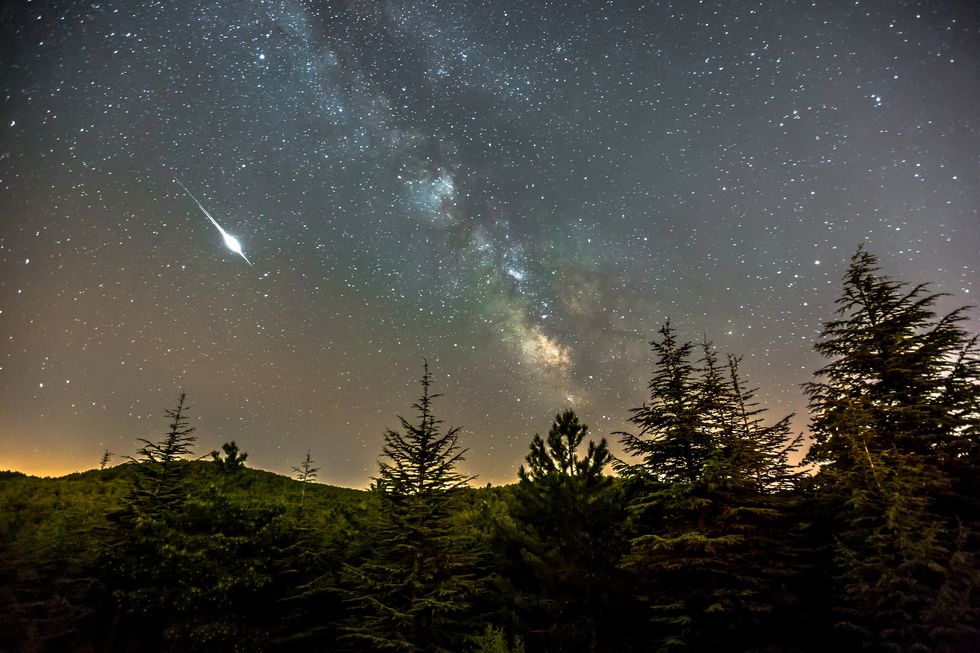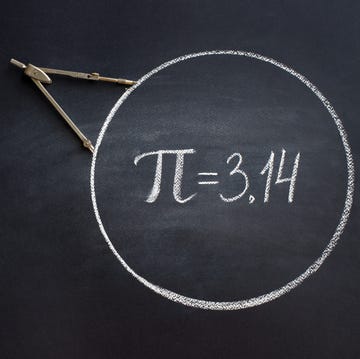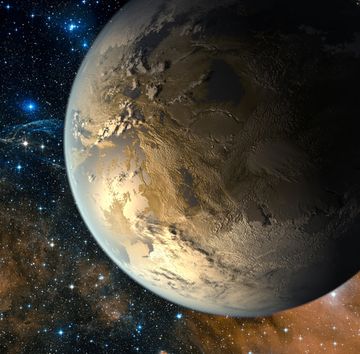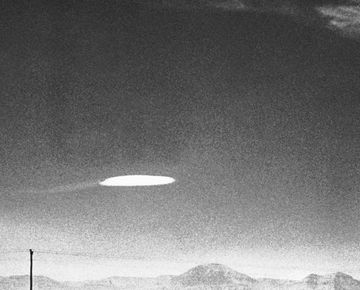Stargazers will see plenty of enchanting sights in 2024, but the most mesmerizing may be a total solar eclipse on April 8, which will be visible in most of North America, including 15 U.S. states that will experience totality. You’ll also be able to view an annular solar eclipse, two lunar eclipses, 12 meteor showers, at least two comets, and an asteroid. The year will also have its usual full moons and picturesque planetary conjunctions.
Keep looking up, and use our 2024 astronomy calendar to plan for this year’s celestial wonders.
🕰 TIP: The times and dates we refer to in this article pertain to the U.S. Eastern Time zone unless otherwise stated. Make sure you’re converting the times and dates to match your local time zone.
What Skywatchers Should Look For
🌞 Solar and Lunar Eclipses 🌚
During a solar eclipse, the moon moves between the sun and Earth, and the sun casts the dark central part of the moon’s shadow, the umbra, on Earth. When the moon covers the sun’s center portion, watchers can see a fiery ring around the moon where the edges of the sun peek out. This is called an annular solar eclipse.
During a total lunar eclipse, the Earth comes between the sun and the moon, and and its shadow covers the moon, often causing it to appear red through our planet’s atmosphere. More dust and clouds in our atmosphere means a redder-looking moon. A penbumbral eclipse occurs as the moon moves through the penumbra, the fainter outer part of Earth’s shadow.
☄️ Comets ☄️
Comets are responsible for a two-part show. The one we can see with our naked eyes is a meteor shower, but the comet itself is beautiful, too, especially with a telescope that can reveal its luminous tail. The icy dust trails of these long-haul travelers through our solar system produce a sparkling show every time they get close enough to the sun, whose light turns a mundane ball of ice-coated rock into a dazzling display. We see comets periodically, every time they intersect with Earth’s own trip around the sun.
Comets are generally named for their discoverer—either a person or a spacecraft. Perhaps the best known is Comet 1P/Halley, which comes around every 76 years; its next appearance will be on July 27, 2061. Halley also bears the distinction of being the first comet ever photographed, when several international spacecraft snapped a shot of its nucleus in 1986.
🌟 The 7 Best Telescopes For Stargazing
🪨 Asteroids 🪨
NASA keeps a handy list of the five closest asteroids predicted to fly by Earth, including 2022 YH3, a whopping 290-foot rocky mass that whipped by our planet on January 14, getting as close as 4.52 million miles away. To put that in perspective, it’s like seeing the Statue of Liberty flying through space about 19 times as far away as the moon. It’s too far away and too small to see except with a really good telescope, but you can see this and other “close-approach” asteroids this year on the Eyes on Asteroids site. And on the Center For Near-Earth Object Studies close approaches data table, you can look up asteroids that will roam close to Earth until the year 2200.
💫 Meteor Showers 💫
As Earth moves through a comet’s tail, the particles of debris collide with our atmosphere and heat up, generating a light show. If the moon is full or nearly full the night of a meteor shower, you’ll see only the brightest streaks. On any night you choose to look up, make sure you find as dark a location as possible for the best views, and try for post-midnight. While each shower is densest in the region of the constellation it’s named for, it can appear—with lesser frequency—anywhere in the sky.
🌝 Full Moons and Supermoons 🌙
The lunar cycle of 29.5 days gives us 12 full moons per year. Around the world, different cultures see the moon as a dramatic signifier of harvests, holidays, and other seasonal events. As such, our faithful gray neighbor has a multitude of names that remind people of specific human customs and natural events.
Check out this visualization of the moon phases using this NASA tool. Dates for full moons shown below are based on Universal Time. To calculate your time of day, visit NASA’s time zones tool.
💡Did You Know? “Supermoon” describes a moon at its closest orbital point to Earth; it can look larger and brighter than usual. A supermoon doesn’t have to be a full moon, though it usually is. (The moon is usually about 238,900 miles from Earth.) Meanwhile, “blue moons” don’t actually appear blue—when a month has two full moons, the second one is called a blue moon.
Keep reading for all of this year’s full moons, which bear widely accepted names based on Native American and European traditions. You’ll also find the year’s supermoons in this list.
🪐 Planetary Conjunctions 🪐
While planets are far from each other in space, two or more may sometimes appear close to one other in the sky. This is different from the much rarer planetary alignment, also dubbed “a planet parade” in which planets appear to be arranged in a straight line.
💡Did You Know? If it twinkles—in other words, if the point of light seems to vibrate slightly—it’s a star. If it’s still and solid, it’s a planet. That’s because starlight travels so far that by the time it passes through our atmosphere, it’s distorted.
A Month-by-Month Guide
January
✨January 3, 4: Quadrantids Meteor Shower
Peaking at up to 40 meteors per hour, you’ll see dust grains astronomers think an extinct comet, 2003 EH1, shed away. The shower runs annually from January 1-5. It peaks this year on the night of the 3rd and morning of the 4th. Get your best views in a dark location after midnight and look towards the constellation Bootes to see most of the show.
January 27: Mars, Venus, and Mercury Alignment
Just before sunrise, if you’re in the Northern Hemisphere, look low above the southeastern horizon in the constellation Sagittarius. You’ll see Mars and Mercury with the naked eye. From the Southern Hemisphere, the planets will be a little higher. For more planetary conjunctions this year, visit Starwalk.
💫 Comet 144P/Kushida
Use large binoculars or a small telescope to check out this short-period comet, which makes its rounds every 7.6 years. While it made its closest approach to Earth on December 12, 2023, Kushida reaches its perihelion, or point closest to the sun, on January 25, when astronomers expect it will shine with at least magnitude of at least 7.4. Look for the comet after dusk above your south-eastern horizon if you are in the Northeastern U.S.
☄️ Here’s a Quick Way to Search for Comets and Asteroids
Find out the positions and visibilities of any current bright comets or asteroids based on your location with In-the-Sky.org’s Guide.
☄️ Asteroid Vesta
The best part of the year to see the second most massive object in the main part of the asteroid belt is January, when Vesta will be at its brightest, magnitude 6.7. Vesta is so big that it makes up nearly 9 percent of the all asteroids and could almost be considered a dwarf planet. Vesta has a crust, mantle, and core, with a belt of deep troughs surrounding its rocky body—one of them is larger than the Grand Canyon. It will be about 1.5 Astronomical Units (AUs) from Earth—about the distance from Earth to the sun, or 93 million miles. Look above your eastern horizon, as dusk fades to darkness, if you are in the northeaster U.S.
Wolf Moon: This month’s full moon is on January 25.
February
💫 C/2021 S3 (PanSTARRS)
Perihelion, or its closest approach to the sun, will occurs on February 14, 2024. You’re in the best position to see this 7.3-magnitude, Valentine’s Day comet from the northeastern U.S. Look to the south-eastern horizon at least two hours before dawn, as it will fade from view with the sun’s arrival. The comet’s closest approach to Earth will be on March 14, but its magnitude is expected to stay the same at that time.
Snow Moon: This month’s full moon is on February 24.
Let the Universe Inspire You
🌟 18 Best Stargazing Apps for Spotting Constellations in the Night
😎 Build Your Own Eclipse Viewer
🔭 James Webb Telescope’s Top 9 Discoveries of 2023
March
🌺 March 20: Spring/Summer Equinox
At 03:01 UTC (which stands for Coordinated Universal Time and is the same as Greenwich Mean Time), the sun will shine directly on the equator. Day and night will be nearly equal. For the Northern Hemisphere it’s the first day of spring, and in the Southern Hemisphere this day signifies the first day of autumn.
🌙 March 25: Penumbral Lunar Eclipse
The Moon will pass through part of the Earth’s shadow, darkening but not blotting it out completely. This partial shadow is called the penumbra. Look for this eclipse if you are anywhere in North America, Mexico, Central America, or South America.
Worm Moon: This month’s full moon is on March 25.
April
🌞 April 8: The Great North American Eclipse
Mexico, the United States, and Canada will have the best views of this dramatic sight.
The last total solar eclipse visible in the continental United States occurred in 2017 and the next one will not take place until 2045. The path of totality will begin in the Pacific Ocean and move across parts of Mexico and the eastern United States and Nova Scotia. The total eclipse will be visible in parts of Texas, Arkansas, Missouri, Illinois, Indiana, Kentucky, Ohio, Pennsylvania, New York, Vermont, New Hampshire, and Maine. Remember to wear proper eye protection before you turn skyward!
🌚 See the map of the path of totality. 🌚 If you can’t see the event from your location, check out Timeanddate to watch it live.
💫 Comet Pons-Brooks
Gaining closest approach and maximum luminosity between April and June, Comet 12P/Pons-Brooks will be an extra treat for skywatchers in April. In fact, if you are careful, you can observe the comet during the false twilight of the total solar eclipse on April 8. If you’re far from city lights, it should be brighter than any star, and you should be able to see it unaided; from a city, you can still take in the brilliant sight of this periodic comet using binoculars or a small backyard telescope. Look to the southwest of the eclipsed sun.
🪐 Planet Party
As a bonus, six planets will be out during the eclipse, especially during totality. Venus will be the brightest, at magnitude –3.9. located about 15° southwest of the Sun, with Saturn and Mars strung along a line farther southwest. On the northeast side of the sun will be the second brightest planet, magnitude –2 Jupiter, with Uranus trailing farther to the northeast. You can also check out Mercury, but since it will share the same sky space as the sun during totality, it will be more difficult to make out.
💡 Did You Know? One magnitude is defined as a ratio of brightness of 2.512 times. So a star of magnitude 5.0 is 2.512 times brighter than one of magnitude 6.0. A star that is magnitude 1.0 is then 100 times as bright as a star of magnitude 5.0. So many different luminosities exist, though, that astronomers now assign negative magnitudes as well, just to reflect the wide range accurately.
✨ April 22–23: Lyrids Meteor Shower (Average)
Comet C/1861 G1 Thatcher’s dust trail creates the Lyrids. Considered an average shower at a peak rate of 20 meteors per hour, the shower will be visible from April 16–25 but the best views are from the night of the 22nd into the morning of the 23rd. Watch for streaks of light radiating from the constellation Lyra.
Pink Moon: This month’s full moon is on April 24.
May
✨ May 6–7: Eta Aquarids Meteor Shower (Above Average)
Halley’s Comet produces two showers this year. First is the Eta Aquarids, which can let up to 60 fiery meteors fly per hour in the Southern Hemisphere. About half that number appear in the Northern Hemisphere. While the shower peaks the night of May 6 into the morning of May 7, keen-eyed skywatchers can enjoy the shower from April 19–May 28. While last year posed a challenge from the light of the full moon, this year the new moon (the side of the Moon that is not being illuminated by the Sun) will offer no competition.
Flower Moon: This month’s full moon is on May 23.
June
☀️ June 20: Summer/Winter Solstice
On this day, the North Pole is tilted toward the sun, which will be directly over the Tropic of Cancer, its northernmost position. It’s also the first day of summer for those living north of the equator, and the first day of winter in the Southern Hemisphere.
Strawberry Moon: This month’s full moon is on June 23.
July
✨ July 28–29: Delta Aquarids Meteor Shower (Average)
Comets Marsden and Kracht leave their icy particles behind in the Constellation Aquarius. Producing up to 20 meteors per hour at its peak, the show runs from July 12–August 23. You will have to contend with a second quarter moon, but you’ll increase your chances if you meteor hunt after midnight.
Buck Moon: This month’s full moon is on July 22.
August
✨ August 12–13: Perseids Meteor Shower (Above Average)
Comet Swift-Tuttle, discovered in 1862, is responsible for one of the biggest annual meteor showers. With up to 60 meteors per hour on its best night, and many bright conflagrations of the comet’s grainy debris, fans of shooting stars will experience a satisfying show. The Perseids range from July 17–August 24, and your best viewing is from a dark location after midnight, when the moon will set.
Sturgeon Moon: This month’s full moon is on August 19.
September
💫 Comet C/2023 A3 (Tsuchinshan–ATLAS)
This comet was discovered via the the Purple Mountain Observatory (Tsuchinshan) in the east of Nanjing, China and then picked up as a possible asteroid by the Terrestrial-impact Last Alert System (ATLAS) in South Africa. Astronomers later realized from images by the Zwicky Transient Facility (ZTF) at Palomar Observatory that the short coma and tail indicated a comet.
This year, C/2023 A3 has the potential to outshine any other comet in 2024. On September 27, when it reaches perihelion, it will be just 36 million miles from Earth, hugging the orbit of Mercury, and could be dazzling. Because size, composition and relative position to the Earth and sun all play a role in how luminous a comet appears, we can’t yet predict exactly how bright it will look in our night sky.
September 22: September Equinox
With the sun shining directly on the equator, you’ll see nearly equal amounts of day and night. For Earth residents north of the equator, it’s the first day of fall, while the southern half of our planet experiences the first first day of spring.
Harvest Moon: This month’s full moon is on September 18, and it’s also a supermoon.
October
🌞 October 2: Annular Solar Eclipse
Though it’s not a total solar eclipse, which is rare, an annular solar eclipse is still a fascinating sight. The moon is far enough away from Earth to cover the sun only partially, and it obscures the sun’s corona, the outermost gases of its atmosphere. You will still see a ring of light around the moon, which itself will appear dark. For details of the eclipse path—starting in the Pacific Ocean off the coast of South America and moving across parts of southern Chile and Argentina—see NASA’s Interactive Google Map. If you’re in southern South America, you’ll probably have a good view.
☄️ October 5: Asteroid Fly-by
Nearly a quarter of a mile across and weighing 54 million tons, 2007 FT3 would cause devastating regional destruction, like dropping a bomb of 2.6 billion tons of TNT. Fortunately, this “lost asteroid,” which has been out of sight since 2007, has only a 1 in 11.5 million chance of striking Earth on Oct. 5. It will swing by again on March 3, 2030, but still will have only a 1 in 10 million chance of making contact.
✨ October 7: Draconids Meteor Shower (Below Average)
Comet 21P Giacobini-Zinner creates a kind of mini-meteor shower, with about ten meteors every hour. Appearing each year from October 6–10, the Draconids is a bit odd in the most convenient way—you’re better off viewing it in the early evening instead of after midnight. Remember to find a dark location, and look to the constellation Draco for the most frequent views. The best part? The second quarter moon the night of October 7 means good viewing conditions early in the evening.
✨ October 21–22: Orionids Meteor Shower (Average)
Halley’s Comet may be one of the most historically coveted comet sightings, but the October shower it will produce this year is average at best; you’ll see about 20 meteors per hour maximum. From October 2–November 7, Halley, first discovered in 1758, will shed debris that ends up in Earth’s atmosphere. Expect the waning gibbous moon to obstruct some of the fainter meteors, and get your best views after midnight.
Hunter Moon: This month’s full moon is on October 17, and it’s a supermoon.
November
✨ November 4–5: Taurids Meteor Shower (Below Average)
Debris from Asteroid 2004 TG10 and debris from Comet 2P Encke land on our atmospheric doorstep starting September 7, and last all the way until December 10. While it’s long-lasting, the combined Taurids particles yield only about 5–10 meteors per hour. Also keep in mind that the first quarter moon will block most of the meteors on the night of November 4. For better visibility, watch after midnight from a location with little to no light pollution.
✨ November 17–18: Leonids Meteor Shower (Average)
Comet Tempel-Tuttle gives us an unusual meteor show about every 33 years, when hundreds of meteors rain down every hour. The last time the Leonids dazzled us that way was in 2001; this year, expect about 15 meteors per hour at its peak. The shower runs annually from November 6–30. Since the full moon comes so close to the meteor shower peak, you will have to make an effort to see all but the brightest particles.
Beaver Moon: This month’s full moon is on November 15, and it’s a supermoon.
December
✨ December 13–14: Geminids Meteor Shower (Above Average)
As Asteroid 3200 Phaethon roams past Earth, we’ll get arguably the most brilliant meteor shower of the year. The Geminids will strew the sky with up to 120 sparkling meteors per hour at the shower’s peak, focused in the region of the constellation Gemini. While the nearly full moon will obscure all but the brightest meteors this year, you can expect to see some of the show as Phaethon leaves a trail in our atmosphere from December 7–17.
December 21: December Solstice
When the sun reaches its southernmost position in the sky, directly over the Tropic of Capricorn, it's the first day of winter for folks living north of the equator. The Southern Hemisphere of Earth is tilted toward the sun, making this day the first day of summer south of the equator.
✨ December 21–22: Ursids Meteor Shower (Below Average)
Comet Tuttle rounds out the year with a minor meteor shower yielding about 5–10 meteors per hour. They’ll pop up from December 17–25, competing with a waning gibbous moon this year. Look to the constellation Ursa Minor to catch sight of at least a few streaks.
Cold Moon: This month’s full moon is on December 15.
Before joining Popular Mechanics, Manasee Wagh worked as a newspaper reporter, a science journalist, a tech writer, and a computer engineer. She’s always looking for ways to combine the three greatest joys in her life: science, travel, and food.
